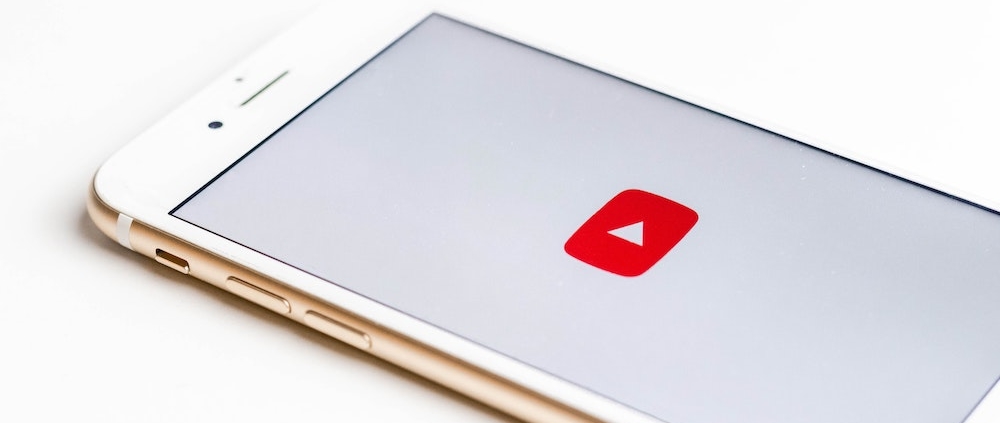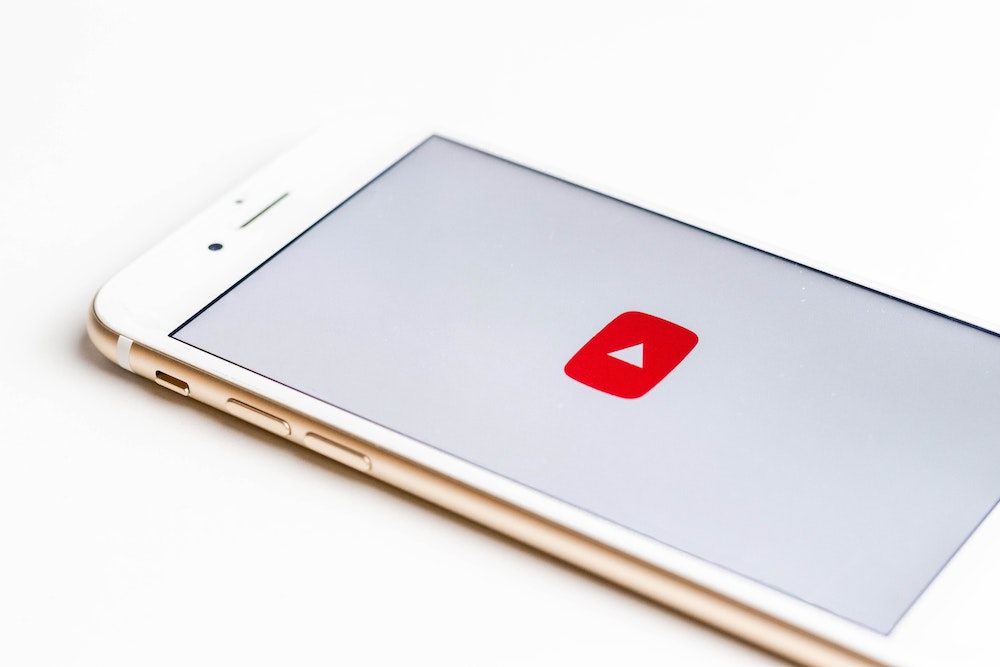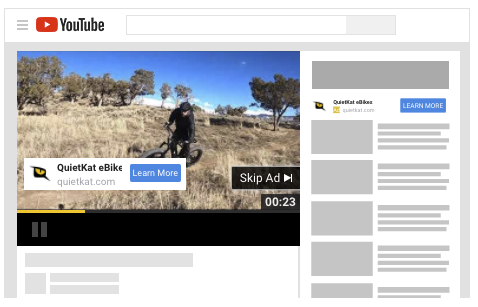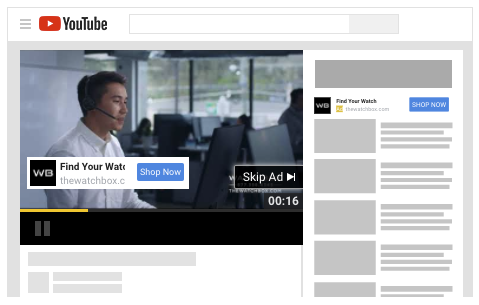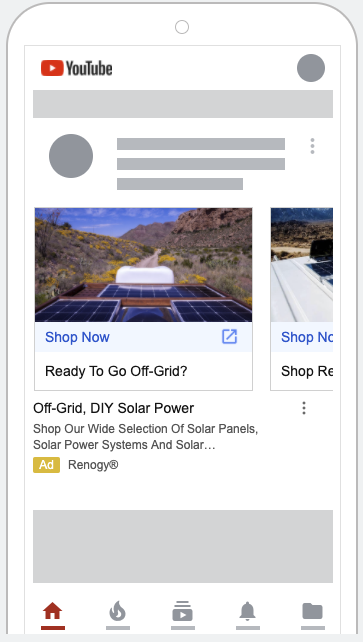YouTube Advertising in 2020: Example Ad Campaigns From Tuff Clients
Incredible reach, narrow audience targeting, and the chance to show your product in all its glory through video. It’s no wonder advertising on YouTube grew 36% in 2019 and is now a $15 billion – or nearly 10% – slice of Alphabet’s (Google’s parent company) revenue. The YouTube ad stats are, to say the least, very impressive.
Now, in 2020, with most of the world stuck at home and glued to their devices, 39.4% of social media users in the US alone believe they will use YouTube significantly more than usual and 24.3% slightly more than usual, according to a March 2020 survey by Izea.
In other words, over 60% of US social media users plan on using YouTube more now that they’re confined at home.
At Tuff, we’ve known the value of a comprehensive YouTube ad strategy for years. We’re also willing to bet that YouTube viewership will continue to grow throughout 2020, even as lockdowns are lifted and we’re no longer confined to home.
That’s why we recommend YouTube ads to a variety of our partners, especially those with a story to tell, brand awareness goals, or a product that impresses in use.
In this post, we’ll take a look at some of the YouTube campaigns we have run so far in 2020 alongside our partners.
Creating Top of Funnel Awareness For QuietKat
QuietKat is a maker of premium, electric fat tire bikes. From the beginning of our partnership, we knew that the more we could show the product in use via quality video assets, the more brand awareness and interest in the products we could generate.
We also knew that the likelihood of someone buying a $3,000 – $6,000 electric bike after watching a video ad on YouTube was low – even if the bikes are as rad as a QuietKat.
Instead of attempting to focus on lower funnel conversions, our strategy so far has involved incorporating YouTube at the top of our full-funnel approach, focused on achieving the lowest Cost Per View (CPV), while continuously testing new audiences and video creative.
The Campaign Structure
Equipped with 4 high-quality videos produced by the QuietKat team, we launched 4 campaigns, each with one video asset, running as skippable in-stream ads.
Within each campaign, we have multiple ad groups with different targets. For example, one ad group will contain a list of topics to target, while the other contains a list of audiences to target. Running these ad groups side-by-side, we can quickly learn which audiences or topics are performing the best and optimize our campaigns to show for the best performing audiences or topics.
Within each of these ad groups, there are multiple ads which have been designed to split test multiple CTAs on the same video that the campaign is structured on. We want to know, is there a call-to-action that users are more likely to embrace when presented with a video ad? Is ‘Shop Now’ too strong of an ask for this expensive of a product? Most likely. But what about ‘Explore QuietKat’?
Altogether, we tested 40 different ad variations of targeting and copy. With all of these variables being tested over the course of a few weeks, we quickly found our winning video asset, as well as our winning target audience. Spoiler alert – topic targeting outperformed audience targeting for our main KPI – Cost Per View – with an awesome $0.02 CPV.
Why is Cost Per View so important for this YouTube ad strategy?
As mentioned earlier, our goal for this YouTube ad strategy is to increase brand awareness for QuietKat electric fat-tire bikes. By optimizing for the lowest CPV in our target audiences, we are able to reach the most users within our budget. However, with YouTube at the top of our full-funnel strategy, we knew that one touchpoint for these users is not enough. We didn’t simply want to show them a video and never interact with them again. That’s where the next steps of our funnel come in.
One of the most underutilized sources for creating retargeting audiences is YouTube. When most people dream up retargeting audiences, they usually only think about creating audiences based on the users who have already visited their site.
For sites that don’t get a lot of traffic, your audience sizes are limited. For sites that get most of their traffic through paid ads, the cost per visitor is high, and therefore it is expensive to create large retargeting audiences.
But, with YouTube ads, you can create a large retargeting audience for cheap, by creating an audience of users who have viewed your YouTube ad.
For example – with $900 spent, we were able to create a retargeting audience of 20,000 targeted users who had watched one of our YouTube ads – or $0.045 per user. Not a bad cost to add a user to a retargeting list that you know has already seen your product in action.
Important note: bumper ads and non-skippable instream ads are not eligible for adding users to retargeting lists, so be sure to use an ad type like skippable instream ads if you want to use this tactic.
With Cost Per View optimization as part of your YouTube ad strategy, you open a new world of retargeting possibilities – one that allows you to add fresh users to your retargeting audiences at a much lower cost than normal.
WatchBox – TrueView for Action
What about using YouTube to acquire traffic that is further down the funnel, or in other words, closer to taking the desired action aka converting? That’s the question we looked to answer for Tuff partner, WatchBox, when we created a Trueview for Action YouTube ad strategy.
With a fully fleshed out search and display strategy already producing positive results, we wanted to expand WatchBox’s footprint on YouTube and acquire highly targeted users who we knew were looking for the products that WatchBox had to offer.
While topic and audience targeting can get us close and cast a wide net, we wanted to target users that we knew we were actively searching for the products we had to offer because they were already indicating their intent.
In order to achieve this, we created a Custom Intent audience created around targeted keywords, rather than audience attributes.
Thanks to WatchBox’s extensive search campaign history, we were able to pull over 12 months worth of search data to identify the keywords and search terms that were converting best on the WatchBox site.
We took the top 50 keywords identified in this audit and used these keywords to build our Custom Intent audience.
Optimizing YouTube Campaigns for On-Site Performance
With the goal of getting engaged users to the WatchBox site in mind, we opted to use this Custom Intent audience in a Trueview for Action campaign.
YouTube’s Trueview for Action campaigns are designed to drive leads and conversions by adding CTAs, headline text overlays, and an end screen to the video ad. These additional elements on the YouTube ad provide multiple opportunities for user engagement and result in a much larger percentage of visitors clicking from a YouTube ad to your site when compared against ad types optimized for brand awareness.
With a $10,000 budget and armed with multiple 15 second and 30-second video ad variations, we launched and began to collect results.
As initial results came in, we noticed that the on-site performance according to bounce rate, time on site, and pages/session was just about equal across the 15 second and 30-second ad variations. However, the 30-second ad variation was converting at a 21% higher conversion rate.
With this information and on-site conversions in mind, we paused the 15-second ad variations and left our 30-second video ad variations running to complete the campaign.
Looking at the results of this YouTube campaign against the results of our ongoing Search and Display campaigns, we noticed some clear areas of success for this YouTube strategy.
Key metrics from this campaign include a Bounce Rate of 31.35% with pages per session of 4.51. In comparison, the overall campaign average during the same time period was a Bounce Rate of 63.73% and pages per session of 2.60.
Additionally, this YouTube campaign outperformed the overall campaign average in conversion rate by 33.33%!
By leveraging a YouTube ad format designed to drive clicks and conversions, along with a hyper-targeted audience created by search terms, we were able to drive high quality traffic to the WatchBox site through a new platform.
How We Advertise on YouTube Without Video Assets
What about our partners who don’t have the luxury of access to top quality video content production?
Although video content is definitely preferred, there are still ways to get ad placements on YouTube, even without having video assets.
The most familiar way to accomplish this is to target YouTube placements in display retargeting campaigns. Oftentimes, and especially when using dynamic or responsive ads, youtube.com will appear as a top placement for display campaigns. And although you can target specific YouTube channels and YouTube videos in this campaign type, you are limited to normal display ad assets and are missing out on premium YouTube homepage placements.
This is where the ‘Discovery’ ad type has come into use for Tuff partner, Renogy.
We knew that Renogy could benefit from a premium placement on the YouTube homepage (Discovery campaigns also include placements on Gmail and Google Discover feeds), and we also knew that focusing on this placement could help drive transactions on their site, especially when used to target lower-funnel retargeting audiences, such as Abandoned Cart audiences.
We set up a Discovery campaign split testing static image ads with carousel ads – an ad type only available for Discovery campaigns.
Within the first 2 weeks of launch, the Discovery campaign began returning a 4x ROAS when used for retargeting – compared to a 2.5x ROAS for dynamic retargeting campaign targeting the exact same audiences.
Conclusion
With near-unlimited reach, low advertising costs, and the ability to reach very specific audiences, YouTube is one of the top networks savvy brands are leveraging.
Many of Tuff’s partners are successfully advertising on YouTube in 2020. Ready to give YouTube ads a go with our YouTube ads agency team?

Chris is a PPC Strategist based in Nashville, Tennessee. When he’s not scaling Google Ads & YouTube campaigns, he enjoys longboarding, tinkering with automation tools, and a little bit of gaming.
